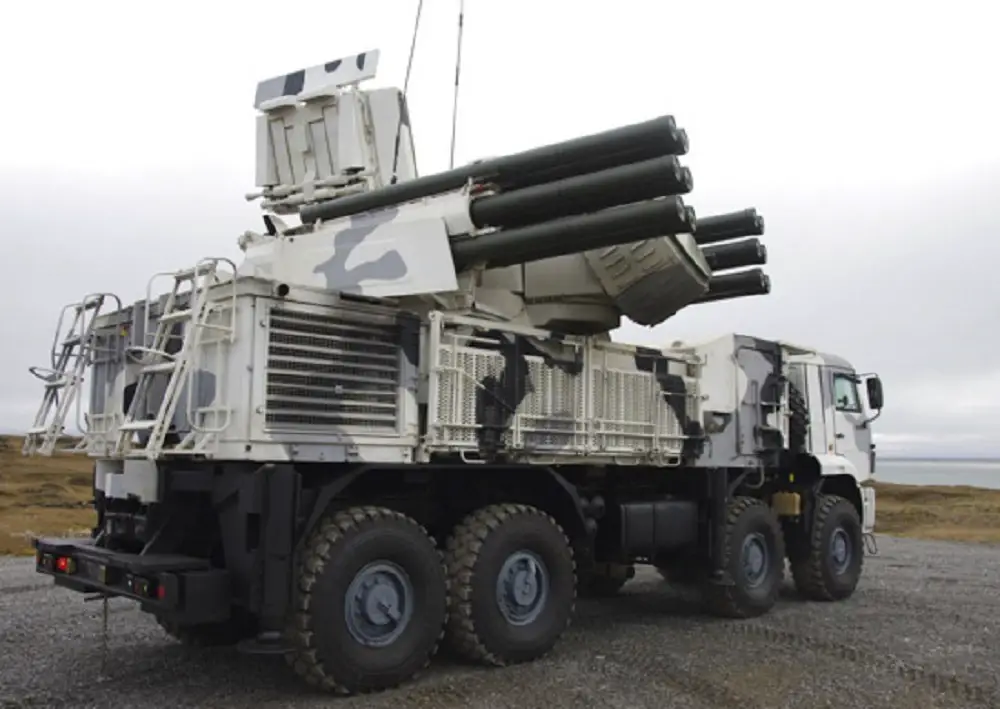Servicemen of the tactical group of the Russian Northern Fleet, stationed at the Arctic base Northern Clover on Kotelny Island in the Laptev Sea, have completed combat training missions for the defence of the coast from the landing of a mock enemy landing force. The shooting was carried out in a difficult meteorological situation, with a strong gusty wind up to 20 meters per second and an air temperature of about zero degrees. During the exercise, the combat crews of the battery, consisting of Pantsir-S1 anti-aircraft missile and gun systems, successfully fired at targets simulating enemy equipment. Models of armored personnel carriers located at a distance of up to three kilometers were used as targets.
Pantsir-S1 is the first and most numerously produced Pantsir missile version from 2008-2013 and more planned in 2019. Starting with the Pantsir-S1 (Russian: NATO reporting name SA-22 Greyhound) as the first version, it is produced by KBP Instrument Design Bureau of Tula, Russia. The Pantsir-S1 was designed to provide point air defence of military/industrial/administrative installations against aircraft, helicopters, precision munitions, cruise missiles and UAVs; and to provide additional protection to air defence units against enemy air attacks employing precision munitions, especially at low to extremely low altitudes.

The tactical group of the Russian Northern Fleet on Kotelny Island, in addition to the Arctic version of the Pantsir-S1 anti-aircraft missile and gun system, also has Bastion anti-ship anti-aircraft missile systems, which makes it possible to reliably ensure the security of the Russian sector of the Arctic and a section of the Northern Sea Route in the zone of responsibility of the tactical group. Kotelny is equipped with a state-of-the-art trefoil military compound; communications and Sopka-2 radar facilities, represent a robust anti-access/area denial (A2/AD) bubble in the Arctic, which could limit the North Atlantic Treaty Organization (NATO) and U.S. air and maritime capabilities in the region.
The Russian Northern Fleet (Severnyy flot) is the fleet of the Russian Navy in the Arctic. Established in 1933 by the Soviet Union as the Northern Flotilla, the fleet historically descends from the Russian Imperial Arctic Sea Flotilla established in 1916 to protect the White Sea during World War I. The Northern Fleet is tasked with responsibility for operations and defense in the Arctic seas along Northern Russia, including the Barents Sea and Kara Sea. Today, the Northern Fleet is the basis of the Northern Fleet Joint Strategic Command, established in 2014 and which includes all Russian armed forces located in the Murmansk Oblast and Arkhangelsk Oblast, and on Russia’s offshore islands along its northern coast.
















